Contact Us. Web site contents copyrighted. All rights reserved. Made With Serif WebPlus. Home

Juniper Thinning Projects on the Modoc National Forest
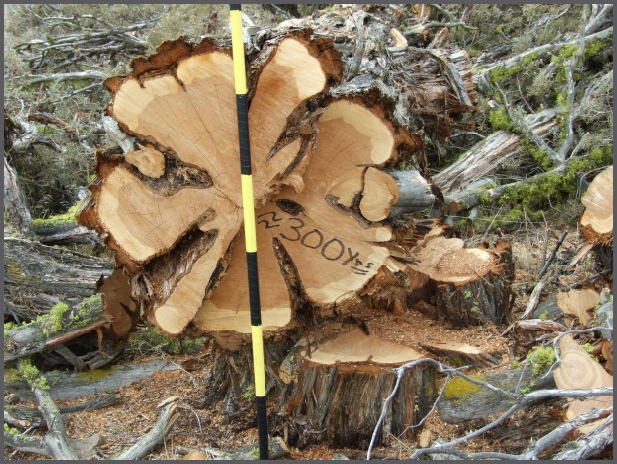
The Sage Steppe Ecosystem Restoration Strategy was incorporated into the Resource Management Plan for the Modoc National Forest in 2008. It is a landscape-wide 50 year plan to reduce the amount of encroaching young western juniper on public and private lands by several thousand acres per year. This would eventually help to restore the sage steppe to a pre-settlement condition. Since pre-settlement western juniper were here prior to 1870, these older juniper trees are protected by provisions in the Sage Steppe Restoration plan. Only the post-settlement young juniper are to be removed under the restoration plan. Sadly, when it comes to old growth western juniper, what the Modoc National Forest says on paper is not what it practices in the field!
Measuring stick is in six inch increments.
Pictures of Big Sage Old Growth Juniper Cut Click Here
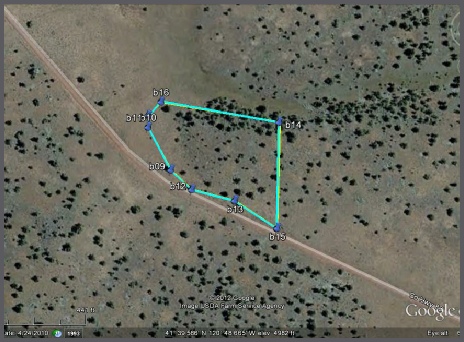
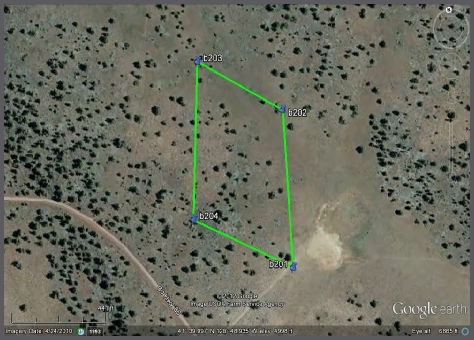
March 27, 2012. The Google image below shows a 6.3 acre plot that we surveyed near the project boundary. On this site there were 34 old growth junipers cut down and six old growth mutilated with lower limbs cut. 83% of the old growth were cut down on this site, leaving about one mutilated old growth juniper per acre.
April 22, 2012. The image below shows a 4.1 acre site about 0.5 miles south east of the 6.3 acre site to the left. On this site, 45 old growth juniper were cut down and four were mutilated and still standing. Over 90% of the old growth were cut down on this 4.1 acres with about one mutilated old growth standing per acre.
Below is a satellite image of a 34 acre site on the 1,200 acre Big Sage Allotment juniper thinning project that we surveyed over a period of four days in April and May of 2012. This new data added 281 more old junipers that were cut down and an additional 61 old junipers that were mutilated. Each blue stick pin and identifier represents at least one old growth juniper that was cut down or mutilated in this Forest Service “thinning” project. Each identifier is documented by a photograph and GPS data. For pictures of the destruction on this site, CLICK HERE.
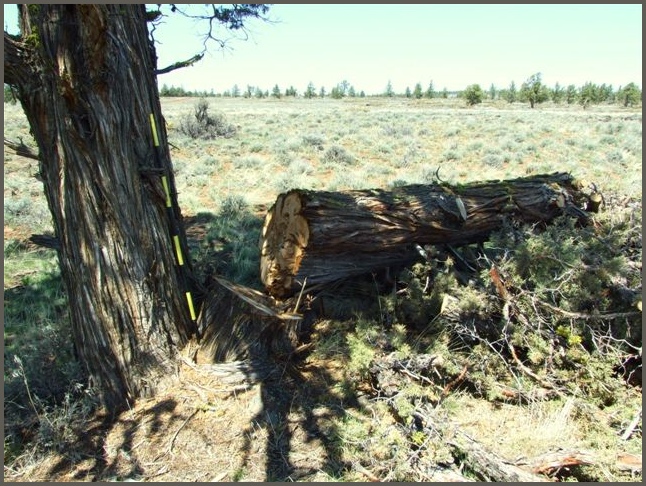
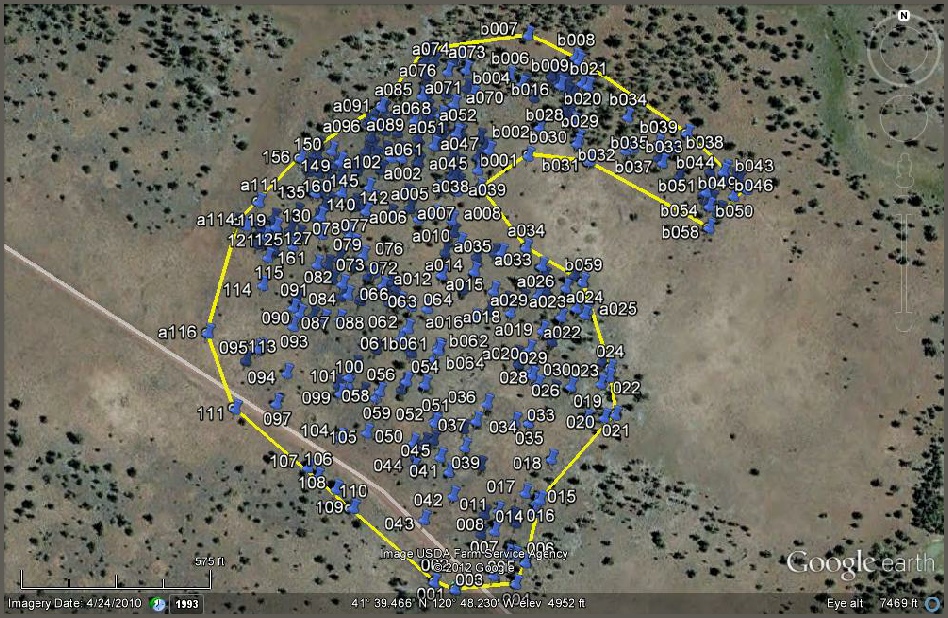
May 29, 2012. We surveyed a 6.8 acre knoll on the 1,200 acre Big Sage Allotment. The satellite image to the left shows this recent site. The statistics for this site are very similar to those sites already mentioned. Sixty old growth juniper cut down with ages from 390 years to 155 years and diameters from 36 inches to eight inches. The Forest Service also mutilated ten old growth juniper with diameters from 36 inches up to over 48 inches. Notice the sparse distribution of juniper on this site. We ask the question again. Why would the Forest Service ever implement a juniper thinning project here?
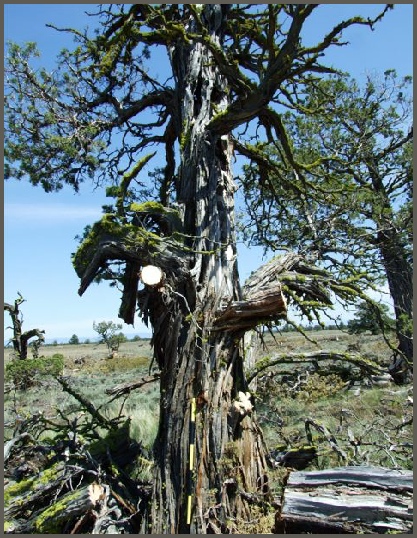
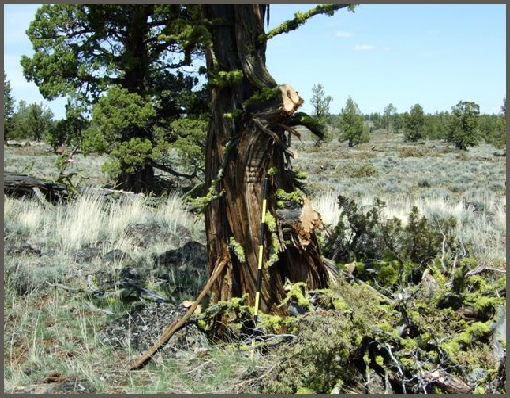
Eighty-one old growth juniper on the four sites we surveyed were just mutilated and left standing.
Summary of data, June 2, 2012. We have now surveyed a total of 50.9 acres of the 1,200 acre Forest Service project. We have documented a total of 501 old growth junipers that have been cut down or mutilated. Of those, 420 old growth juniper were cut down and 81 were mutilated. Over 83% of the old growth juniper were cut down. The Forest Service cut down and “lopped and scattered” old growth juniper with diameters up to 50 inches and ages of up to 615 years! It also cut down many dead standing snags. Several trees were also cut down that we did not count as old growth. These were trees in the 120 to 140 year range with diameters of six to twelve inches and heights of less than nine feet, indicating their long struggle for survival in a tough, rocky location.
Looking at the four satellite images, there were not many trees here to begin with and most of them were old growth. If you go to the web page, BEFORE THINNING, you can see what this part of the Big Sage Thinning Project looked like before the project was implemented. In the “Design Criteria for Juniper Removal”, the Forest Service states that only “The hand felling of all juniper that do not exhibit old growth characteristics...” will take place. Why would the Forest Service choose an old growth woodland for a “thinning project in the first place? Who benefits?
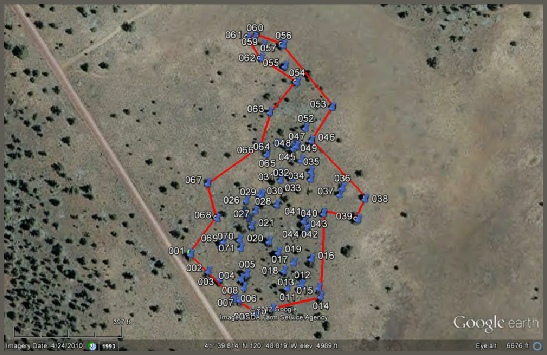
Five of the old growth juniper that were cut down on this 6.8 acre site above had blooming Cusick’s stickseed, Hackelia cusickii, growing at their base. We have only found this plant under the shade of old growth juniper and usually in old growth juniper woodlands. This plant is included in the CNPS Inventory of Rare and Endangered Plants on list 4.3 (limited distribution).
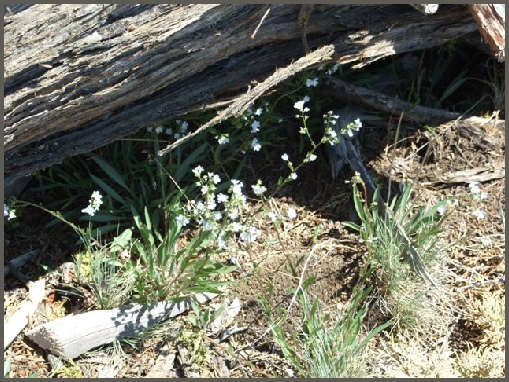
Cusick’s stickseed at the base of an old growth juniper cut down by the Forest Service on the Big Sage Allotment.